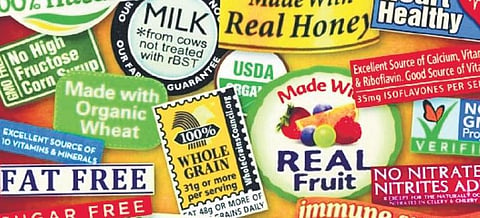

NEW DELHI: A majority of consumers favour colour code warnings on ultra-processed food (UDFs) items, according to a survey conducted by an independent agency. The survey by Local Circle, India’s leading community social media platform, claimed that seven out of ten consumers prefer red, green or orange labels on packaged food for a safe choice.
The Food Safety and Standards Authority of India (FSSAI), under the Health Ministry, is considering a star rating system for identifying ultra-processed food. But the survey showed that consumers prefer colour codes instead of the star rating based on the food product’s sugar, salt, and fat content.
An overwhelming 86 per cent of consumers surveyed preferred e-commerce sites and grocery apps to identify processed food with red colour. “The survey results confirm that 7 in 10 respondents continue to believe that front of the pack Label with a colour code is more effective than a star rating system to inform the Indian consumer about what they are consuming,” said Sachin Taparia, founder of Local Circles.
“Even if FSSAI were to proceed with its star rating system, the latest survey finds that 7 in 10 consumers want at least the ultra-processed foods to carry a RED label/bar on the Front of the Pack for easy identification,” he said.
“A sizable consumer base of ultra-processed food, at least in cities, is using the eCommerce sites or apps to order groceries including processed foods without the benefit of full visibility to the package; over 8 in 10 of online shoppers of grocery believe that these ultra-processed foods must be identified with a red label or bar,” he added, adding that if implemented such a measure will help people go for healthier options.
The findings are based on 19,000 responses from consumers spread over 285 districts. A majority (64 per cent) of respondents were men, and half were from tier 1 cities. “We will escalate the survey findings to FSSAI, health ministry, and other stakeholders so that the pulse of the consumers is given due consideration as India finalises its rules for HFSS foods identification,” said Taparia.
FSSAI is finalising Food and Safety Standards (Labelling and Display) Amendments Regulations 2022 relating to Front of Pack Nutritional Labelling (FOPNL) and high fat, sugar, and salt (HFSS).